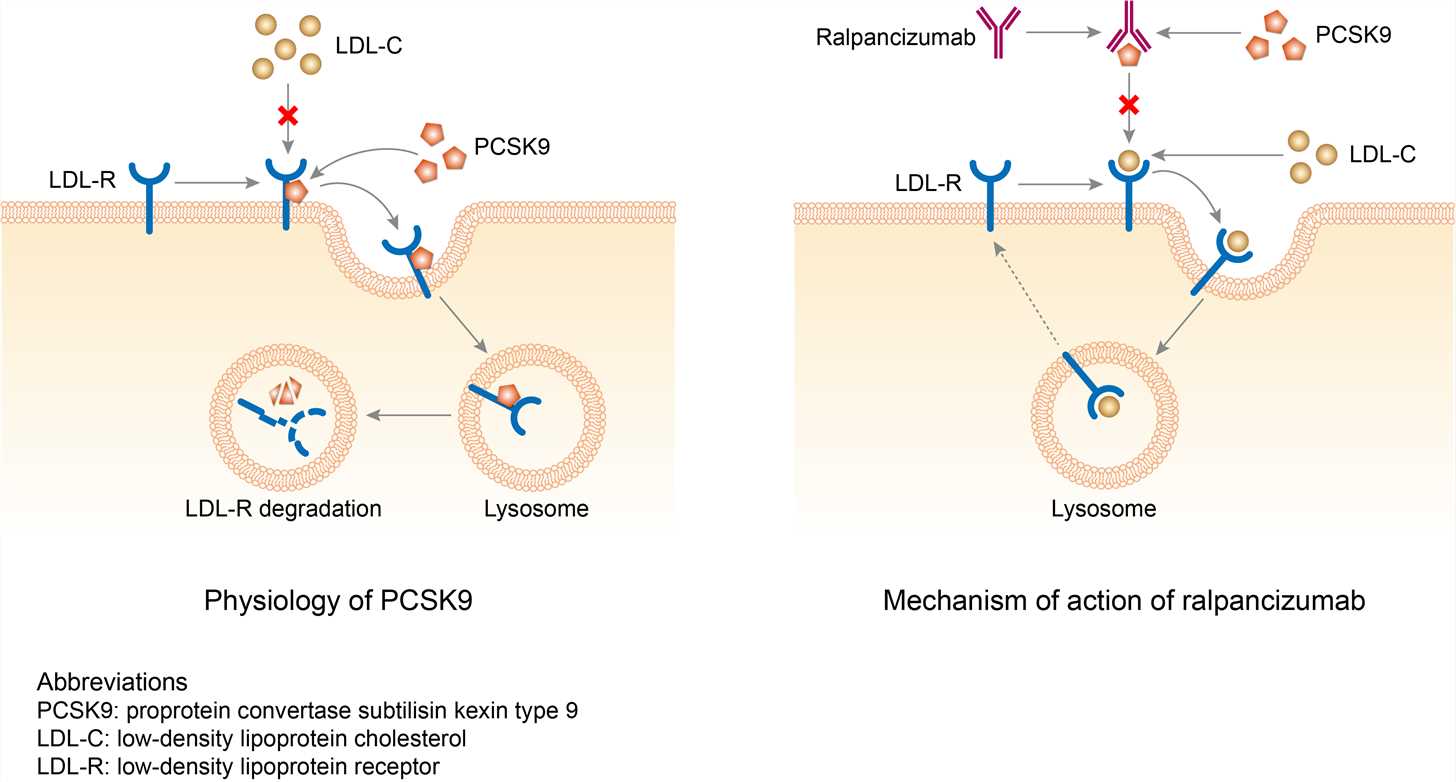Ralpancizumab Overview
Introduction of Ralpancizumab
Ralpancizumab (development code RN317, or PF-05335810) is a monoclonal antibody (mAb) designed for the treatment of dyslipidemia. It was developed by Pfizer. A phase I multiarm study demonstrated that RN317 administered as single s.c. and i.v. doses up to 6 mg/kg and multiple s.c. doses of 300 mg Q28d was safe and well tolerated in subjects with a diagnosis of hypercholesterolemia receiving ongoing treatment with statins. RN317 was engineered to eliminate target-mediated drug clearance, and the half-life was longer and the duration of LDL-C lowering longer than that of other agents (e.g. bococizumab) in this class. RN317 producing sustained lowering of LDL-C of ∼50% following multiple s.c. doses.
Mechanism of Action of Ralpancizumab
The serine protease proprotein convertase subtilisin kexin type 9 (PCSK9) binds to and downregulates low-density lipoprotein receptor (LDL-R) levels on hepatocytes. A decrease in active circulating PCSK9 causes a rise in hepatocyte LDL-R density, thereby increasing LDL uptake from the circulation leading to a reduction in serum LDL cholesterol (LDL-C) levels. Gain-of-function mutations in the PCSK9 gene results in an increase in LDL-C levels, and has been associated with an increase in long-term cardiovascular risk. These observations have led to the inhibition of PCSK9 being a major target for the development of therapies to reduce LDL-C, which may complement the action of statins. Ralpancizumab (RN317), was specifically engineered to have pH-sensitive binding to PCSK9 in order to reduce target-mediated drug clearance, thus prolonging the half-life and sustaining the duration of LDL-C lowering. By incorporating histidines into the complementary region residues, RN317 shows lower affinity for PCSK9 at low acidic pH compared with neutral pH, allowing RN317 to bind and block PCSK9 function in the blood (pH neutral), but to disassociate from PCSK9 in the acidic endosomal compartment and escape PCSK9-mediated degradation. This enables RN317 to be recycled and then potentially reused, prolonging the entity's half-life and increasing exposure. Consistent with these engineered characteristics, RN317 demonstrated prolonged half-life and increased duration of LDL-C lowering.
 Fig.1 Mechanism of Action of Ralpancizumab
Fig.1 Mechanism of Action of Ralpancizumab
For research use only. Not intended for any clinical use.
This site is protected by reCAPTCHA and the Google Privacy Policy and Terms of Service apply.



